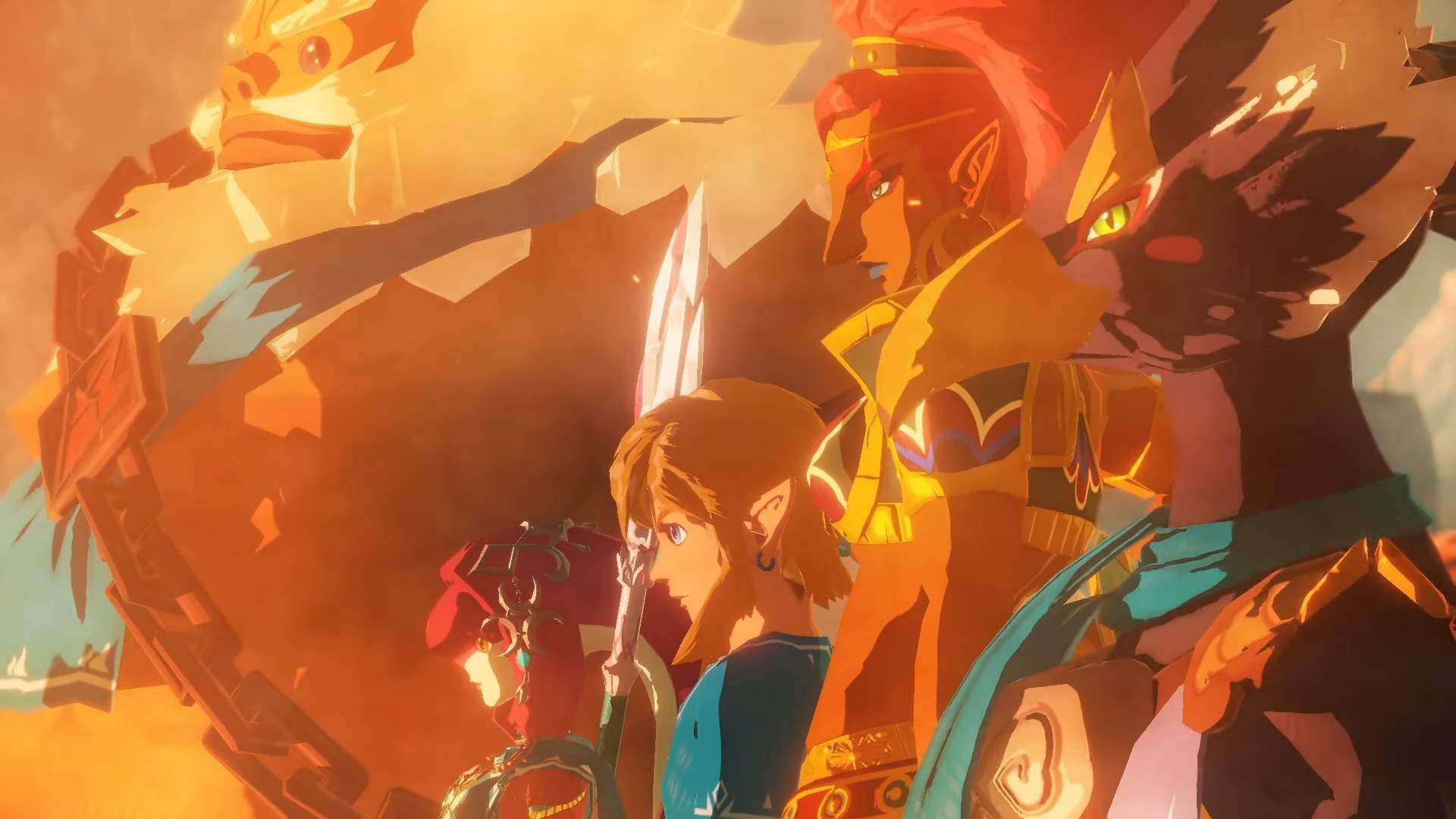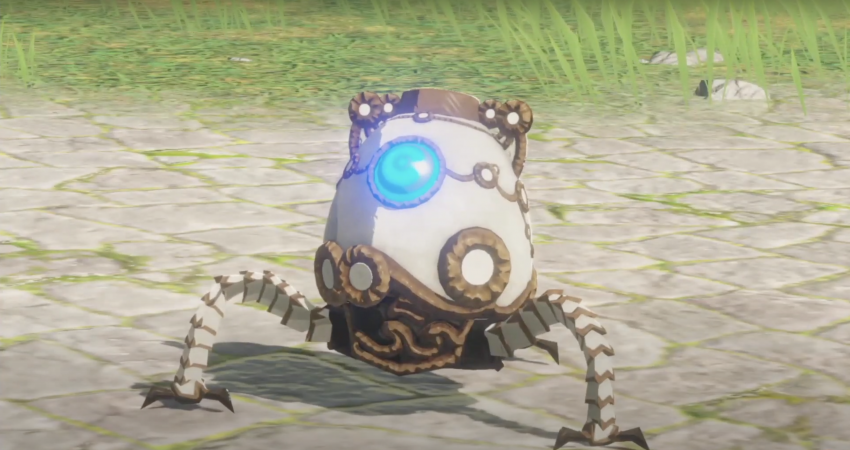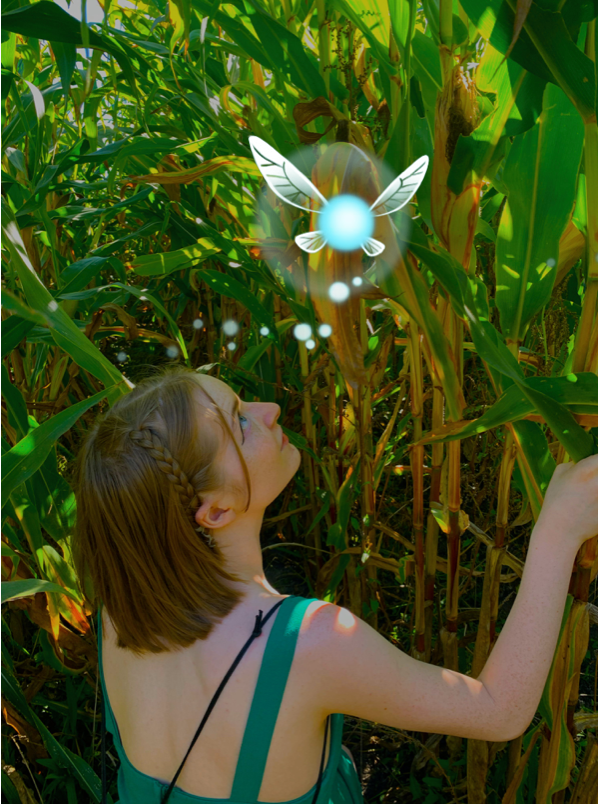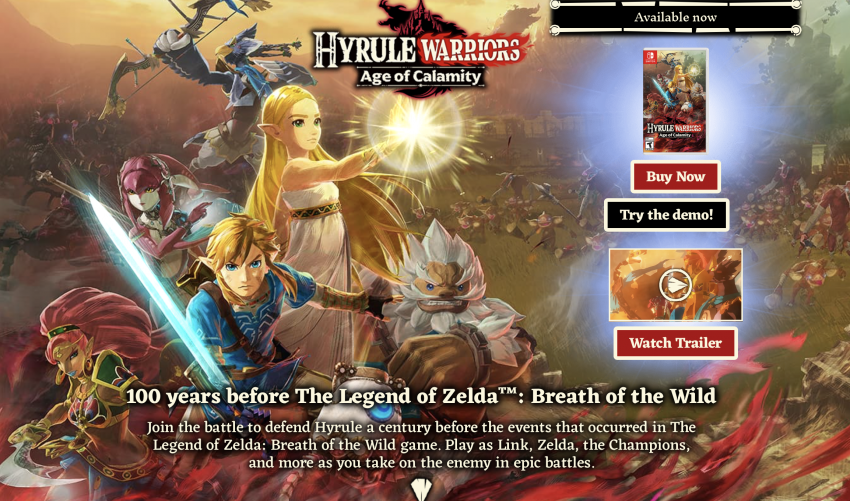Why Hyrule Warriors: Age of Calamity’s Biggest Failing Is Its Advertising
Posted on December 05 2020 by Alexandria Weber

*spoilers for Hyrule Warriors: Age of Calamity*
I see Hyrule Warriors: Age of Calamity as a success when it comes to placing the Hyrule Warriors-style of gameplay into the world of The Legend of Zelda: Breath of the Wild. The combat is fluid and matches well with fighting mechanics in Breath of the Wild. Each character varies in style and each enemy can be defeated in many different ways, creating, much like in Breath of the Wild, and open-world approach to fighting. The concentration, focus, and care put into implementing such detailed gameplay is truly a testament to the work ethic of developers at both Nintendo and Koei Tecmo.
So then why do I attribute the word “failing” to this game when I say that the main aspects of the game were a large success? To put it simply, the story was incredibly disappointing.
My Expectations of Hyrule Warriors
The reason why I had no interest in Hyrule Warriors on the Wii U and 3DS was because I knew that it used characters from across the Zelda timeline. I assumed that the story they were telling was not worth my time or money and, upon watching the cutscenes, I was proved right. At the time it seemed like a lot of fan service with no real purpose and, since I value story highly when it comes to judging video games, I didn’t see any value in Hyrule Warriors except for the music and the renditions of characters that perhaps did not have as many pixels in their original Zelda games. However, it lacked the depth I search for and when the gameplay seemed largely akin to button-mashing, 14-year-old me decided against purchasing it.
When Hyrule Warriors: Age of Calamity was announced, I was incredibly excited. It was advertised as a game that delved into Breath of the Wild‘s Hyrule, yet 100 years in the past and with structures quite intact, not yet ruined by the onslaught of corrupted Guardians. As more information about the game came out, I was led to believe that Hyrule Warriors: Age of Calamity would in fact tell a fuller version of the story in Breath of the Wild, which was rightfully fragmented through the perspective of a protagonist suffering from amnesia. Promotional images and cutscenes seemed to lead in that direction, and thus my expectation followed with high hopes. I would mash any series of buttons to see a fuller perspective of what happened 100 years ago.
In fact, in a recent interview, Hyrule Warriors: Age of Calamity Director Ryōta Matsushita stated that Hyrule Warriors: Age of Calamity “is the story of Link restored to 100 years before Breath of the Wild, which captured the hearts of many people around the globe. How did the fight against the Calamity reach its end? Everyone who plays this game will go back in time 100 years and take control of Link once more, face the unknown future and continue the fight and see for yourself”. This implies that Hyrule Warriors: Age of Calamity details a Hyrule 100 years before Breath of the Wild and that it will detail how the fight against the Calamity “reached its end”. Breath of the Wild fans like me assumed that this meant we would play through the fall of Hyrule as it happened and yet, as the game progressed, it was apparent that was not the case of Hyrule Warriors: Age of Calamity. In fact, the “continue the fight and see for yourself” was actually referencing that players would be fighting to prevent the events 100 years before and during Breath of the Wild from happening instead of the warriors holding their own long enough for the Champions to die, for Link to be laid in the Shrine of Resurrection, and for Zelda to face Calamity Ganon alone at Hyrule Castle.
The Reality of the Calamity

Upon release of the demo and seeing that the egg-shaped Guardian had traveled through time, I had hoped that the story would not deviate but would take the stance that Hyrule falling to the Calamity was inevitable no matter what (an opinion echoed by this editorial), that the threat was that large and Hyrule was that fooled by the hope in their prospects. Much like the author of that editorial, I hoped that the apparent existence of time-travel would not subvert the story set in Breath of the Wild. Perhaps, I thought at the time, the diminutive guardian was merely there as an asset, innocently thinking it can change things when it really can’t.
And yet it seemed the egg-shaped guardian, named Terrako, was there for the sole purpose of not “saving Zelda” as it claimed but truly preventing the Calamity from overtaking Hyrule as depicted in Breath of the Wild, which becomes another timeline entirely. The diminutive guardian uses its time traveling powers to bring the Champions of the future back in time to save the Champions of the past, in the very moment the champions were meant to die to their respective Blights. The involvement of Sidon, Yunobo, Riju, and Teba was the first sign that this game was not what I expected it to be. It seemed incredibly messy of them to make such a decision and it was apparent to me that the development team seemed to care more about gameplay and playable characters than story. As the game came to a close and proved my suspicions correct, I saw victory over the Calamity unravel before my eyes, an unrealistic victory that betrayed the lore set in Breath of the Wild. I would have preferred that they advertised the game more with the possibly of victory, but instead, developers treated a happy ending as a narrative surprise, and therefore betraying its supposed “sequel”.
The King of Hyrule and his role in the story is handled just as messily, supposedly dying to a Guardian blast during a very poignant moment where Zelda desperately wants to save him, but is not permitted to, Link pulling her from danger. And yet, the King survives, with a convenience just as annoying as the moments with the four Champions facing their Blights. The victory over the Calamity is thus handled with an incredibly annoying levels of convenience that I can only interpret as an unrealistic take on the in-world rules and stakes set in Breath of the Wild.
What Makes It Largely Successful

While I will likely be bashing the story of Hyrule Warriors: Age of Calamity with a stubborn insistence, I must give more credit to what the game did well. I already mentioned the combat, which I believe to have elements of strategy on par with Breath of the Wild‘s combat and also defies my expectations of the game being just “button-mashing” as I mentioned earlier. Other than the aspect of combat, however, three very strong points that almost outweigh the crippling story are the music, the characterization, and the setting.
I have started to see the argument that the original soundtrack for Hyrule Warriors: Age of Calamity is vastly superior to the original soundtrack in Breath of the Wild, and that it is what Breath of the Wild should have sounded like in the first place. I am instead of the opinion that the soundtrack for Hyrule Warriors: Age of Calamity is good because of the music in Breath of the Wild and that they are meant to supplement each other, not be compared. “Good” music should not judged by how many instruments there are or how complex it is. Especially for video games, “good” music means for me that it fits the situation at hand. Breath of the Wild’s music is meant to reflect a ruined Hyrule, where only remnants of what once was remain. Thus, the soundtrack is mostly disjointed piano, Link treading places he barely remembers until things become clearer and thus more orchestrated in recalled memories, things that remind him of the Champions, or fights, where Link feels a great a bit of risk and danger. The music in Breath of the Wild is meant to be a reflection of Link’s amnesia and his growth out of suffering from it, so it makes sense that Hyrule Warriors: Age of Calamity uses the same tunes and yet enriches them to be more fully orchestrated. That way, when you play Breath of the Wild, you can really see that Link is grasping at echoes of the past. I feel that Hyrule Warriors: Age of Calamity does this perfectly.
Characterization is another strong suit. Although the presence of the diminutive guardian messed with how things transpired in Breath of the Wild, I felt we got more insight into the personalities and interaction between characters. The dialogue in scenes was very well-written and never deviated from how they were presented in Breath of the Wild, Hyrule Warriors: Age of Calamity even showing us what Impa, Robbie, and Purah looked like younger. In that way, I suppose there was a glimpse into the Hyrule of a hundred years before, but it is unfortunate that the story does not carry through that notion and instead creates an alternate timeline that sets the game instead in a Hyrule where 100 years afterwards is actually not Breath of the Wild at all.
The setting of Hyrule Warriors: Age of Calamity, although perhaps one that deviates from a deep and more interesting storyline, has foundations in a Hyrule that Breath of the Wild fans have wanted to see since 2017. Although exploring a post-apocalyptic Hyrule is chilling and I wouldn’t trade it for anything, I am glad that Hyrule Warriors: Age of Calamity gave fans to chance to see Hyrule before it was a smattering of ruins.
Wasted Potential
I have nothing against happy endings. If done right, they are the ultimate resolve to any given narrative conflict. However, in Hyrule Warriors: Age of Calamity, the idea of a happy ending seems to have been deliberately chosen over canon, as if they would rather conclude the story of Hyrule Warriors: Age of Calamity on its own than potentially connect it with Breath of the Wild. Unless Nintendo told them purposefully that this would not be canon, it seems to me like they wasted a great amount of potential for a truly compelling story of Hyrule’s fall that furthermore led to Breath of the Wild.
I can’t help but feel that the idea of a happy ending is presented as more valuable, that they preferred to tie up the game with an unnecessary and frankly messy bow instead of use the ribbon they were given to tie it securely to Breath of the Wild. I tend to put a lot of value on narrative cohesion, and it saddens me that developers of Hyrule Warriors: Age of Calamity had the chance to do so and decided against it. Whether the reason is because they felt the inclusion of Terrako, Sidon, Riju, Teba, and Yunobo was necessary or because they didn’t think we would be invested in a story when we know how it ends, I am disappointed in both of those reasonings.
My favorite movie of all time is Star Wars Episode III: Revenge of the Sith. It is the third movie of the Star Wars prequels, all three of which leading up to the rise of the Galactic Empire that is the main threat over the course of the original three movies. Although I know that Jedi Anakin Skywalker will become Darth Vader and assist Palpatine in the destruction of the Senate and the Jedi Order, it is still interesting and compelling to watch. I enjoy watching Anakin undergo such a psychological transformation into self-centered thinking, and the movie blurs the lines between the light and dark sides because of the similarities between the Sith and the Jedi Order’s desire to hold onto their power. Even though I know where the movie will lead and where Anakin’s journey truly ends in Star Wars Episode VI: Return of the Jedi, seeing exactly how everything falls apart and how it is detailed is truly a marvel of storytelling. A lot of narratives force happy endings that are simply not true of real life. Life is full of loss and grief and disappointment. George Lucas embraced that in bringing Anakin’s story to life, not tying it up with a messy bow but by tying that deep loss into the next chapter of the story, which is technically Episode IV: A New Hope. The right kind of stories aren’t solely about victory, they are about perseverance.
Hyrule Warriors: Age of Calamity is the equivalent of George Lucas showing Palpatine’s plan fail and giving Anakin and Padme a happy ending raising their children on Naboo. It’d be great, but there would be a squandered opportunity and a subsequent hole left as a result, especially since Star Wars Episode IV: A New Hope already existed as portraying the narrative consequences of the fall of the Republic. That is how I feel about Hyrule Warriors: Age of Calamity.
I would have liked to fight an exhausting battle against the Blights as each of the Champions to feel the futility in their efforts and yet their resiliency and commitment to die as warriors for Hyrule. I would like the King to die so that a great emotional weight would bear on Zelda’s shoulders and be something she has to work through, not something that lifts because he is actually alive. I wanted to see a fuller story that aligns with Link’s memories in Breath of the Wild. I wanted to see more of Link and Zelda’s frantic journey to just survive and how they reevaluated their priorities in a time where the world won’t stop for you to be ready for the next mission. I wanted to play as Zelda as she brings the Master Sword to Korok forest. I wanted to be her as she bravely goes to the castle, faces Calamity Ganon, and waits for Link to wake up from the Shrine of Resurrection. I wanted so much that was a possibility, but just wasn’t done, sacrificed for the mess that Hyrule Warriors: Age of Calamity was instead.
Conclusion
Perhaps my expectations for Hyrule Warriors: Age of Calamity were too high, but I don’t think my expectations were invalid. I think that the development team prioritized combat and made a great game. Unfortunately they set it during a period of Zelda lore that had potential they leaned away from. Although I feel they should have advertised the game differently in order to not heighten expectations in such a way, I would have them rather tell the canon story of the fall of Hyrule before Breath of the Wild. Now that the game cannot be changed, however, I think of it as a great success for a Hyrule Warriors game and I hope Nintendo has been approaching the story of Breath of the Wild 2 with a bit more care. Although this experience has taught me to temper my expectations, I don’t think I am the only one who feels misled. I love the gameplay, but the story had me woefully disappointed.
Am I alone? What do you think about Hyrule Warriors: Age of Calamity and its story? How might you change it? Let us know in the comments below!
Alex Weber is a Senior Editor for Zelda Dungeon. Her favorite food is apple pie and she loves her cat Galadriel. Her alias as a fan fiction writer is fatefulfaerie and she can also be found on Twitter, Instagram, and Tumblr.

Alexandria Weber is a Senior Editor and an aspiring creative writer. Her favorite food is apple pie and she loves her cat Galadriel. Ask her for pictures!






